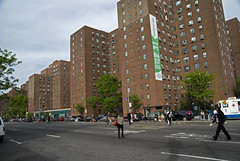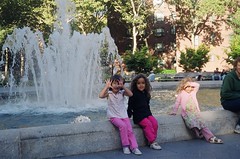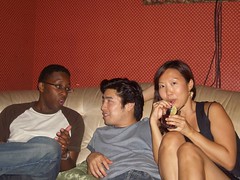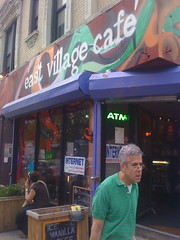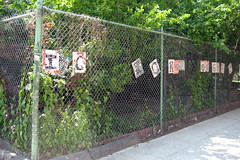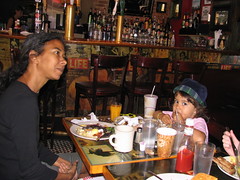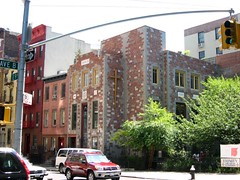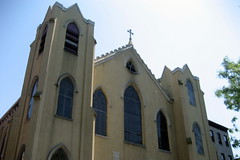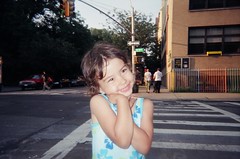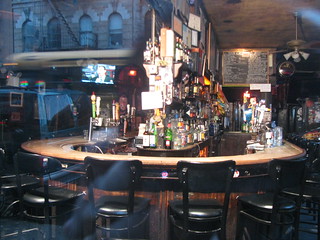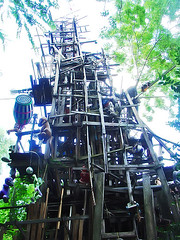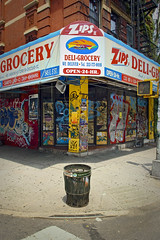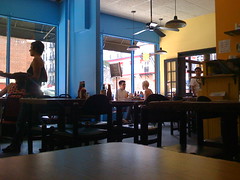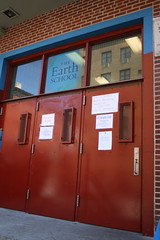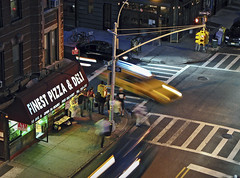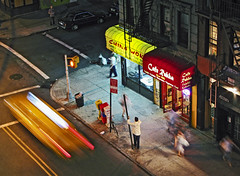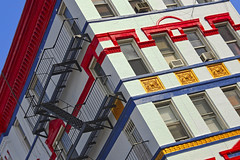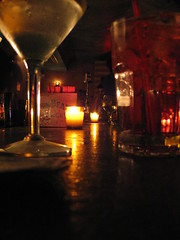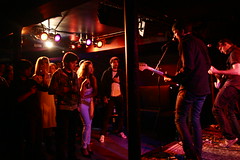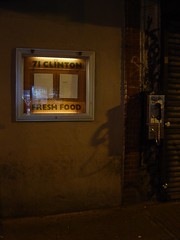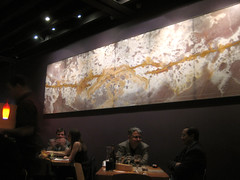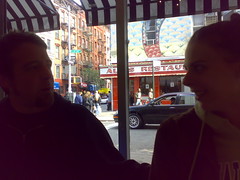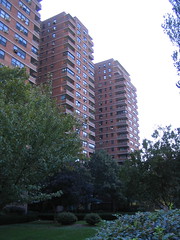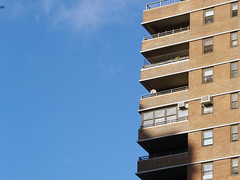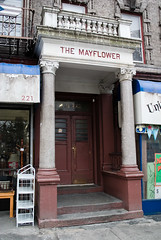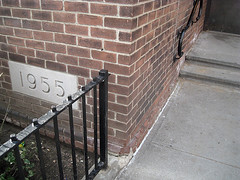West:
Tompkins Square Park
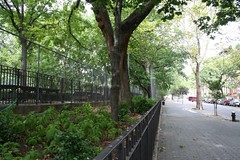
Named for Daniel Tompkins, governor of
New York (1807-16) and U.S. vice president (1817-25), a populist who
abolished slavery in New York.
Once a salt marsh owned by Peter Stuyvesant, the
park was drained and developed in 1834. After being
the site of bread
riots in 1857 and draft riots in 1863, it was
leveled in 1866 and turned into a National
Guard parade ground. When German
socialists gathered here in 1874 to protest the
faltering economy, police injured hundreds in
what was called the Tompkins Square Massacre.
Neighborhood protests resulted in the
re-establishment of the park by 1879; part of
the redesign was by Frederick Law
Olmstead, but most of his plan was not implemented.
By 1916 a detective identified the park as
"a hangout for petty strong-arm men and petty thieves."
Reconstructed by Robert Moses in 1936.
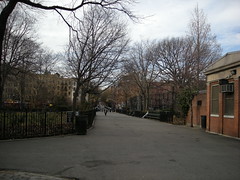
A bandshell erected in 1966
was a venue for concerts by Jimi Hendrix
and the Grateful Dead. When 38 people were
arrested for playing conga drums, a judge
threw out charges, citing "equal protection
for the unwashed, unshod, unkempt and uninhibited."
In 1985, the bandshell
was the venue for the first Wigstock.
In the 1970s and '80s, the park became a homeless
encampment, as depicted in the
Don Delillo novel Mao II. (The park
also appears in the Philip Roth novel
My Life as a Man, as the spot
where a character arranges to buy urine
from a pregnant woman.) A friend who grew up
in New York says that he and his friends used to dare
each other to go in. In August 1989, murderer Daniel Rakowitz
served soup to the homeless here that may or
may not have contained the remains
of his roommate Monika Beerle.
Attempts to evict the homeless in the 1980s led
to a August 1988 police riot, when 44 were injured
by cops with tape over
their badge numbers. After a Memorial Day Riot in
1991, Mayor David Dinkins closed the park for 14
months' of renovations; the
bandshell was destroyed. The park now has a midnight curfew.
Tompkins Square Dog Run
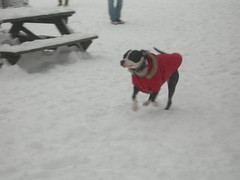
Your best East Village entertainment bargain.
This is the first dog run in a New York City
park.
William Wegman has been known to
walk his models here.
Avenue B Playground
There's a couple of playgrounds in the southeast corner
of the park, not as large or as famous as the one
on Avenue A. The local pre-schools tend to prefer them
because they only have one exit.
| 